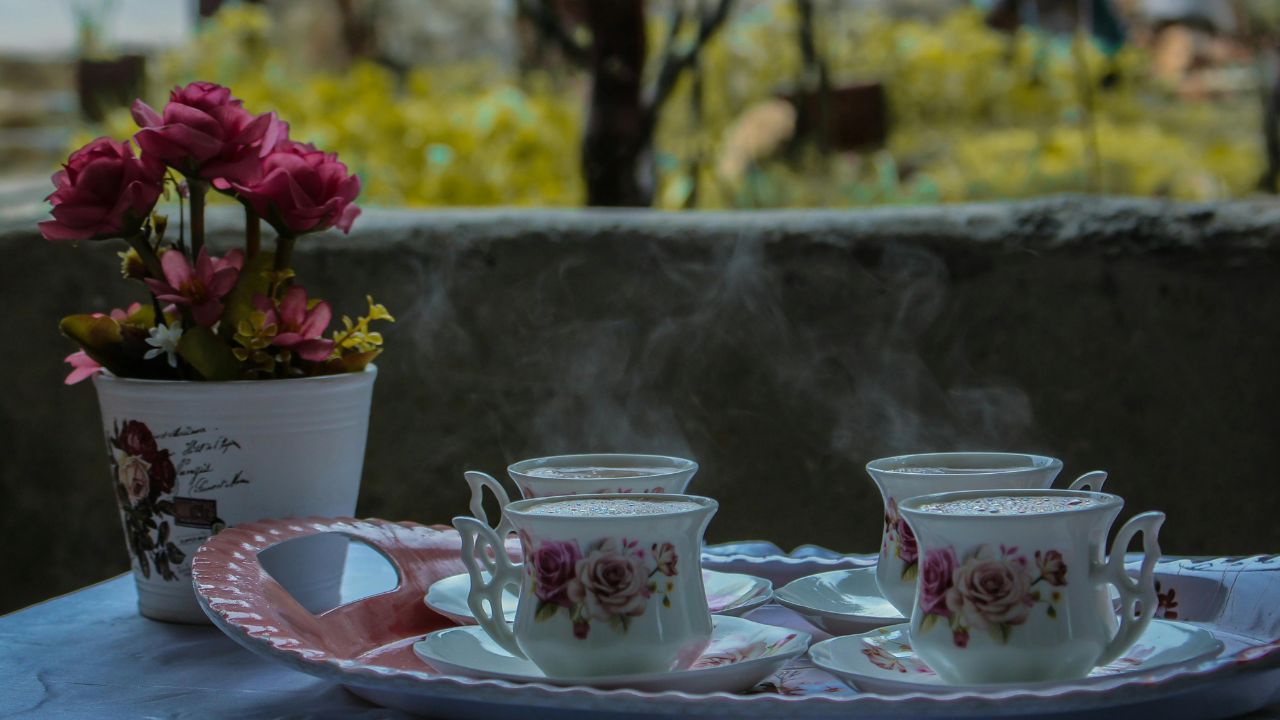Imagine your house smelling strongly of freshly ground coffee, the soft bubbling sound of brewing, and the ceremonial delight of presenting thick, fragrant cups to friends. This is not just coffee; it’s a centuries-old custom, a time for interaction, and it all begins with the ideal Turkish coffee set. A real Turkish coffee set is more than simply pots and cups; it’s a carefully chosen assortment of utensils meant especially to produce this distinctive, unadulterated, and quite strong brew. Forget your French press or drip machine; making real Turkish coffee is a craft, and having the correct tools changes it from difficult to very magical. Understanding and selecting the correct Turkish coffee set is your first step if you’re ready to discover rich cultural traditions and taste coffee unlike anything else. Let’s reveal the keys to create excellence.
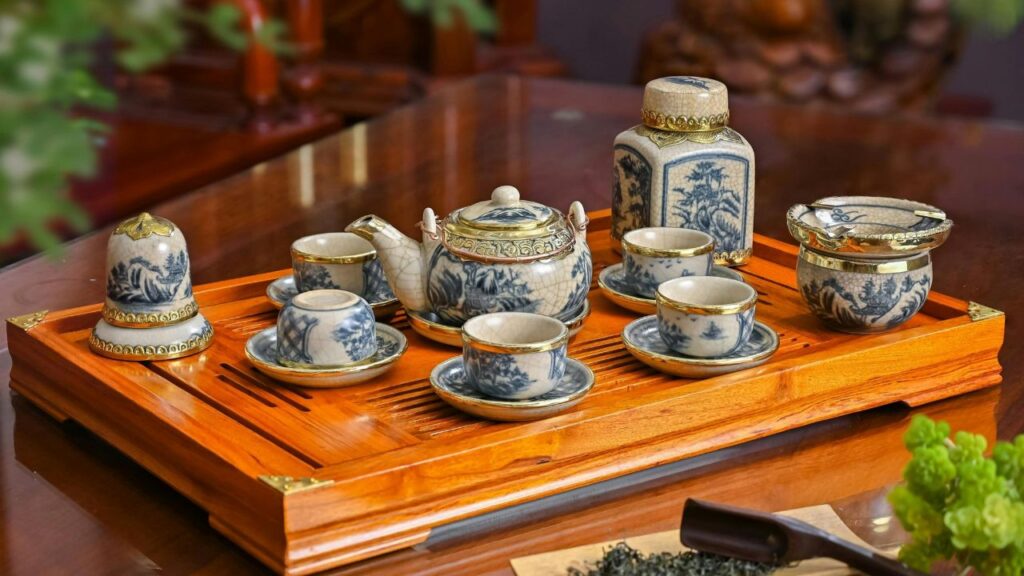
What Makes a Turkish Coffee Set? The Essential Components
Although a whole Turkish coffee set is not difficult, every element is essential for the real brewing and presenting experience. The cezve—also called an ibrik—is the absolute star. Traditionally composed of copper or brass, this is a unique tiny pot with a long handle and a broad bottom that narrows toward top. Its unusual form is absolutely essential for managing the foam and stopping grinds from leaking into the cup. Then come the exquisite small cups known as fincan. Usually composed of porcelain or ceramic, these are miniature, handleless (or occasionally with tiny handles) decorative cups. Their size is deliberate; Turkish coffee is robust and should be tasted gradually. Almost always provided is a little tray (tepsi or sini). Usually beside a little spoon and maybe even a glass of water, this exquisite tray carries the fincan and is used for graceful serving.
Understanding the Cezve (Ibrik)
Any Turkish coffee set’s essential center is the cezve, pronounced “jez-veh,” or ibrik. This isn’t simply a little saucepan; its design is painstakingly crafted for the particular needs of Turkish coffee making. Though copper/brass is chosen by purists for heat management, you will also find them in brass, stainless steel, and even beautiful ceramic. Traditionally constructed from copper for their outstanding and quick heat conductivity. Its key characteristics are a wide base, which maximizes surface area for heating; a narrow neck helps trap the valuable foam (köpük) produced during brewing and stops the fine grounds from readily escaping when pouring; and the long handle keeps your fingers safely away from the stove’s heat source. Sizes range, usually between two to six little cups worth. Controlling the froth and heat depends on you using the correct size cezve for the quantity of coffee you are brewing.
The Importance of the Fincan (Cup)
Without its specific vessel, the fincan, Turkish coffee cannot be really experienced. These are not your typical espresso mugs. Usually tiny, fincan carry just 2-3 ounces (60-90 ml) of liquid. Usually handleless, they are meant to be carried gently by the rim, however occasionally they have very tiny, delicate handles. Appreciating the strong flavor and warmth, this design invites you to cradle the cup and sip leisurely. Though you will also find lovely ceramic variations, they are most usually created from thin, delicate porcelain, praised for maintaining heat effectively and offering a clean taste. Their decoration is fundamental in the Turkish coffee set aesthetic. Fincan frequently feature elaborate patterns, vivid colors, gold trim, or traditional motifs as the evil eye (nazar boncuğu), tulips, or Ottoman-inspired designs.
The Graceful Presentation The Serving Tray (Tepsi/Sini)
The serving tray, sometimes called a tepsi or sini, completes the sophisticated presentation of a Turkish coffee set. This is an essential component of the ritual and hospitality, far more than just a carrying platter. Usually constructed of brass, copper, silver, or wood, trays feature inlays, complex engravings, or repoussé work—hammered designs. The tray has several really significant uses. First of all, it offers a solid and lovely foundation for transporting the delicate, handleless fincan from the kitchen to your visitors without spilling. Second, it usually consists not only of the coffee cups but also a little glass of chilled water (to clear the palate before drinking the coffee) and maybe some Turkish delight (lokum) or a little chocolate. Thirdly, when you provide the coffee to your visitors, it adds a major sense of respect and ceremony.
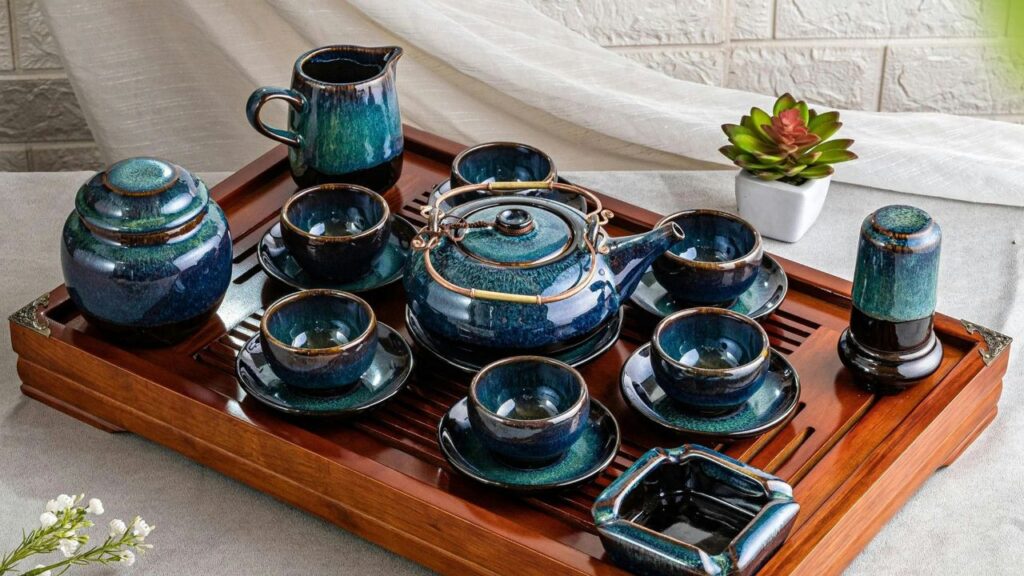
Choosing Your Turkish Coffee Set
The ingredients in your Turkish coffee greatly affect the brewing process, appearance, and lifetime. Let’s dissect the often used options. Copper is the traditional and usually favored material for the cezve (ibrik). Essential for perfect control over the brewing process, it warms up remarkably fast and evenly. Usually lined inside to stop copper from interacting with the coffee is tin or stainless steel. Though more slower than copper, brass is another classic choice with great warmth and good heat conduction. One also needs lining. Though not as quick as copper, stainless steel is a popular modern choice: robust, easy to clean, doesn’t require lining, and warms very decently well. Although they are lovely, ceramic caves are mostly decorative or for mild warming; they lack the exact heat control required for homemade brewing. Porcelain is the standard choice for fincan (cups); thin, elegant, holds heat well, and offers a pure taste.
How to Use Your Turkish Coffee Set
Brewing with your Turkish coffee set is a basic but exact ritual. Start with almost flour-like finely ground coffee — powdery. Real texture cannot be negotiated in this way. Using one of your fincan as a guide—that is, one water serving—measure cold water into your cezve. Directly to the water in the cezve the coffee (approximately one heaping spoonful per fincan) and sugar (if preferred). Not yet; not stir! Set the cezve on low to medium heat. The coffee will float while the mix heats. Just enough gently whisk now to moist all the grounds and dissolve the sugar. Steer clear of stirring once more. Take great attention. A dark foam (köpük) will start to develop and climb. Raise the cezve gently off the fire just before it boils over. Let the froth settle just slightly. Reverse it back to the heat.
Modern Takes on the Turkish Coffee Set
Although firmly anchored in history, the Turkish coffee elite is also embracing modern tastes and lives. Along with classic forms, you will find amazing modern versions. These days, cezves fit modern kitchens with their elegant stainless steel simplicity. Certain have heat-resistant coatings or ergonomic handles. Think bold geometric patterns, vivid solid colors, matte finishes, or even whimsical modern motifs amid historic Ottoman patterns; fincan designs have burst in imagination. While double-walled glass fincan are becoming more and more popular because they provide thermal insulation and a distinctive visual presentation of the layers of coffee, porcelain is still very popular. For a modern style, trays could be made of sleek lacquered wood, marble, or acrylic. Travel sets, miniature versions often with a small burner, allow aficionados to enjoy Turkish coffee anywhere.
Where to Buy Authentic Turkish Coffee Sets
All set to start your path with Turkish coffee? The secret is to find a real and superior Turkish coffee set. First look at specialized internet stores emphasizing Middle Eastern products, Turkish imports, or gourmet coffee equipment. They frequently have a large spectrum of sets, ranging from classic copper to contemporary designs. Though major e-commerce sites (such as Amazon, Etsy, eBay) have many options, carefully research seller ratings, materials, and authenticity claims. Finding real sets, usually at reasonable costs, and you can see the quality personally by visiting a neighborhood Middle Eastern or Turkish grocery store or market. Sometimes, especially in metropolitan cities, specialty kitchenware stores have Turkish coffee sets. For very unique items, look directly from Turkey via internet artists or local marketplaces. When making decisions, give top priority:
- Cezve Material: Copper/brass (lined) for best brewing, stainless steel for ease.
- Cezve Size: Match it to how many cups you typically brew (2-cup, 4-cup etc.).
- Fincan Quality: Porcelain is classic; ensure they feel sturdy and well-made.
- Aesthetic: Choose a style (traditional ornate or modern minimalist) that brings you joy.
- Set Completeness: Does it include cezve, fincan, tray, spoons?
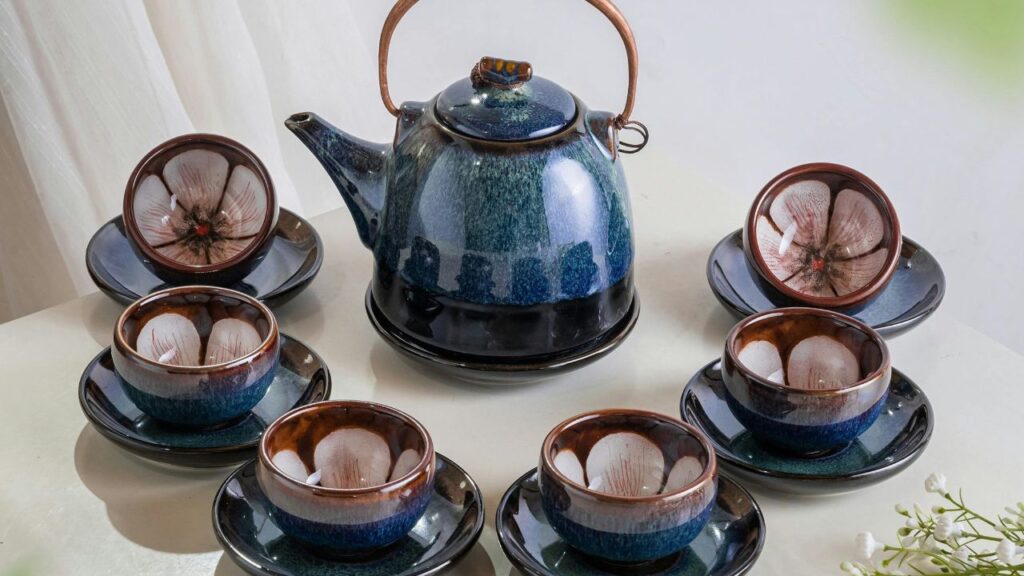
Keeping Your Coffee Ritual Pristine
Good care guarantees that your Turkish coffee set will be lovely and useful for many years of delight. Care depends somewhat on the material. For copper or brass cezvesi, immediately after use, hand wash just with warm water and mild soap. Steer clear of abrasive scrubbers; use a soft sponge. To stop water streaks, completely dry. The exterior will naturally tarnish over time (generate a patina); if you want a brilliant gloss, you can polish it using a dedicated copper or brass cleaner; alternatively, accept the antique look. Usually tin or stainless steel, the internal lining requires careful treatment to prevent scratches. Never run a copper or brass cut-through in the dishwasher. Although hand washing is gentlest, stainless steel caves are more forgiving and often dishwasher safe (see manufacturer guidelines). Generally dishwasher safe, porcelain or ceramic fincan and trays should be hand washed to preserve.
The Cultural Significance of the Turkish Coffee Set
Owning and enjoying a Turkish coffee set ties you to a rich cultural tapestry spanning centuries from the Ottoman Empire. Turkish coffee is profoundly ingrained in social events, hospitality, and customs, not only a drink. The actual preparation is a conscious exercise. In Turkish culture, a basic act of hospitality and respect is offering coffee to visitors. The famous fortune-telling custom (tasseography) adds intrigue and discourse by deciphering the patterns left by the coffee grinds in the fincan following drinking. Often with water and a dessert, the particular manner the coffee is arranged on the tray reflects accepted conventions of hospitality. Frequent historical themes abound in the designs on the tray, fincan, and cezve, thereby narrating the past.
SEO-Optimized Difference Table
| Feature | Cezve (Ibrik) ☕️ | Fincan (Cup) 🍵 | Serving Tray (Tepsi/Sini) 🛎️ |
| Core Function | Brewing Vessel: Designed for precise foam control & heat management. Unique shape is non-negotiable. | Serving Vessel: Hold the strong coffee for sipping. Designed for heat retention & slow savoring. | Presentation & Transport: Safely carries handleless cups & accompaniments. Elevates hospitality. |
| Key Features | Wide base, narrowing neck, long handle. Copper/brass/stainless steel. | Small size (2-3 oz), often handleless, porcelain/ceramic. Intricate decor is common. | Stable surface, often ornate (metal/wood). Holds fincan + water glass/sweets. |
| Material Impact | Crucial for Brewing: Copper/brass = best heat control. Stainless = durable/easy. Ceramic = decorative/reheat only. | Affects Experience: Porcelain = pure taste, heat retention. Ceramic = sturdy style. Glass = modern visual. | Affects Aesthetics: Metal = traditional elegance. Wood = warmth/modern. |
| Why It’s Special | Unique Engineering: Only vessel that properly makes Turkish coffee (foam + texture). | Cultural Design: Handleless form encourages ritualistic sipping & grounds reading. | Ceremonial Role: Symbolizes respect & tradition in serving. Essential for full experience. |
| Modern Variations | Sleek stainless steel, ergonomic handles. Travel-sized versions. | Double-walled glass, bold modern patterns, minimalist designs. | Lacquered wood, marble, acrylic styles. Simpler forms. |
| Care Needs | Hand wash (esp. copper/brass). Avoid abrasives. Dry thoroughly. Polish exterior if desired. | Often dishwasher safe (hand wash preserves decor). Avoid thermal shock. | Wipe clean (metal/wood). Hand wash detailed pieces. Oil wooden trays occasionally. |
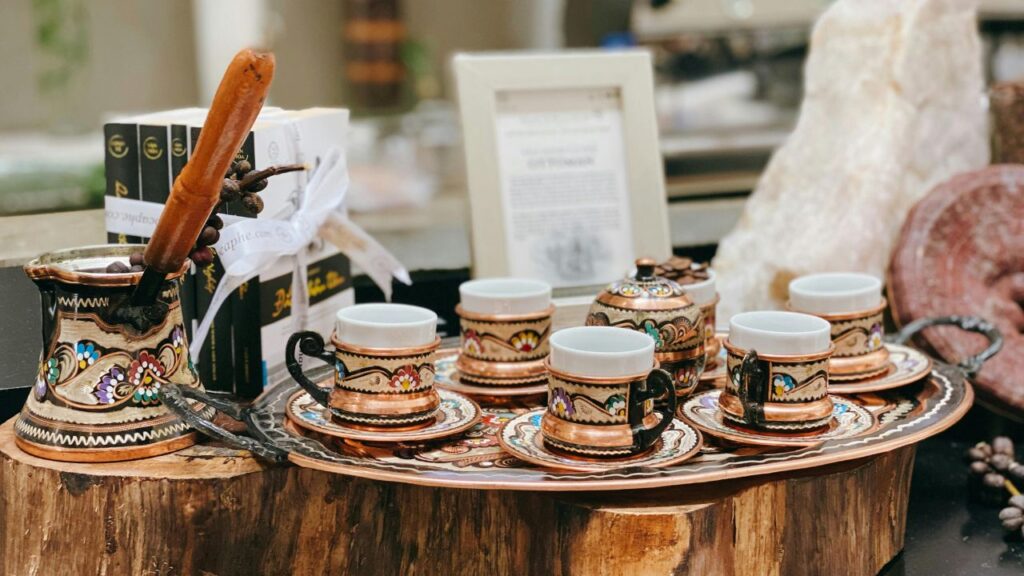
Embrace the Turkish Coffee Set
Purchasing a Turkish coffee set invites one to explore a world of great taste, fascinating custom, and rich cultural legacy. It’s a dedication to slowing down, appreciating the here-now, and presenting something unique to others. From the meticulous choice of your finely ground beans to the fascinating process of coaxing the ideal köpük in your cezve, eventually to the gorgeous presentation on your tray, each stage is part of the charm. Unmatched coffee experiences are produced by the strong, silky texture and unusual preparation technique. The core stays the same whether you choose a sleek modern stainless-steel design or a shining traditional copper set covered in complex patterns. Your Turkish coffee set opens not just a great brew but also a portal to centuries of legacy and the basic delight of a well made cup.
FAQ’s
1. What’s the MOST important piece in a Turkish coffee set?
It’s absolutely necessary to eat cezve (ibrik). Its unusual form (large bottom, small neck) produces the trademark froth and regulates the fine grounds. You actually cannot create real Turkish coffee without it.
2. Why are the cups (fincan) so small and handleless?
Super strong and meant to be savored gradually is Turkish coffee. Its diminutive stature keeps it hot. Being handleless—that is, with small handles—allows you to cradle the cup, experiencing the warmth and motivating you to sip deliberately. That is part of the custom.
3. Can I use a regular small pot instead of a cezve?
Though you would probably struggle technically, you could try. A normal pot lacks the heat control of copper or brass; it will let grounds escape readily into your cup and will not catch the foam (köpük). One must have a real belief if one wants actual outcomes.
4. Do I need the serving tray?
Although not absolutely necessary for brewing, the tray (tepsi) is a major component of the traditional experience. It makes service polite and respectful, often holds water or palette cleansers, and safely carries the handleless cups. It finishes the real ceremonial process.
5. Is it hard to clean the cezve with the fine coffee grounds?
Not really! Just give it a quick cold water rinse right after making it before the grounds stick and dry. Most grinds will pour out readily. The rest is a fast gentle scrub with soap and a soft sponge. Steer clear of strong abrasives, particularly on lined copper/brass.
